Physical Address
304 North Cardinal St.
Dorchester Center, MA 02124
Physical Address
304 North Cardinal St.
Dorchester Center, MA 02124
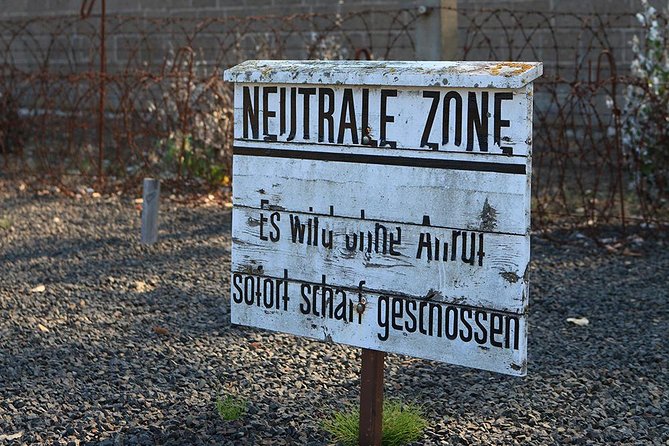
Haunting the grounds of Sachsenhausen Concentration Camp, the stories of its victims echo through the preserved artifacts, inviting visitors to uncover this dark chapter in history.
Sachsenhausen Concentration Camp stands as a solemn reminder of the atrocities committed by the Nazi regime. Established in 1936 near Berlin, the camp served as a training ground for SS guards and a prototype for other Nazi camps. Over 200,000 prisoners endured horrific conditions, including forced labor, medical experiments, and executions, resulting in countless deaths. Today, the site offers a poignant memorial, educating visitors about this dark chapter in history and honoring the victims through guided tours and preserved artifacts. As visitors explore the camp, they’ll uncover the profound stories that echo through its haunting grounds.
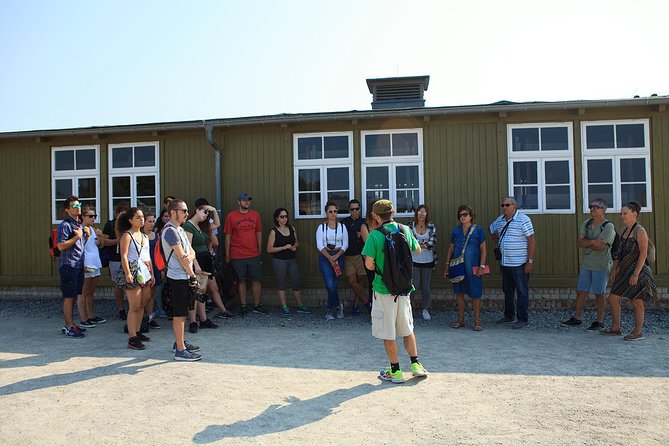
You can also read our reviews of more tours and experiences nearby.

Sachsenhausen Concentration Camp was located approximately 20 kilometers north of Berlin, Germany. Established in 1936, it served as a training center for SS guards and a model for other concentration camps.
Over 200,000 prisoners from more than 40 countries were held at Sachsenhausen during its operation until 1945. Thousands were murdered through executions, medical experiments, and inhumane living conditions.
After World War II, the camp was used by Soviet forces as an internment camp until 1950.
Today, the site is a memorial and museum, educating visitors about the atrocities committed during the Nazi regime.
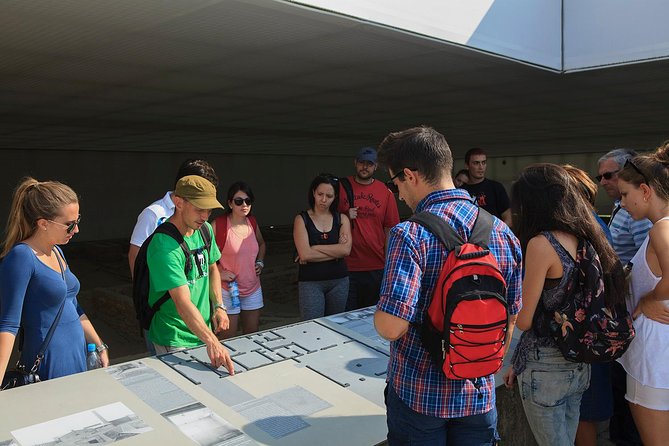
What does a tour of Sachsenhausen Concentration Camp typically entail?
The tour includes a local Spanish-speaking guide and transportation provided via an ABC ticket. The meeting point is the Berlin TV Tower, and the tour ends in Mitte, Berlin.
The tour runs from 10 am with a maximum group size of 30 travelers. Transportation is wheelchair accessible, and a moderate fitness level is recommended due to long walking distances.
Tickets cost $31.95 per person, with free cancellation up to 24 hours prior. The tour has an impressive 4.9 overall rating based on traveler reviews.
Established in 1936, the Sachsenhausen Concentration Camp served as the central camp for the entire Nazi concentration camp system.
The camp’s design included several key features:
These facilities and structures represented the horrors of the Nazi regime and the systematic oppression experienced by those imprisoned at Sachsenhausen.
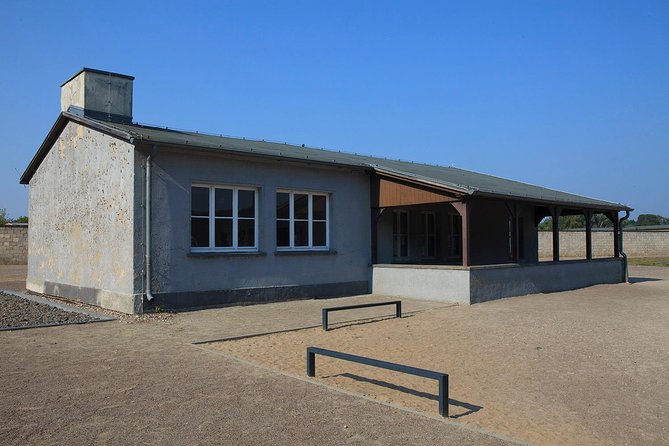
Prisoners at Sachsenhausen endured immense suffering and hardship. They faced brutal treatment, starvation, and disease.
Inmates were forced to work long hours in harsh conditions, often performing physically demanding tasks. Many were subjected to medical experimentation, torture, and summary executions.
Sanitation was poor, and disease was rampant, leading to high mortality rates. Prisoners lived in constant fear and despair, struggling to survive each day.
Despite the horrors they faced, some found ways to resist and organize underground activities, risking their lives in the process.
The experiences of Sachsenhausen’s prisoners stand as a stark reminder of the inhumanity humans can inflict upon one another.
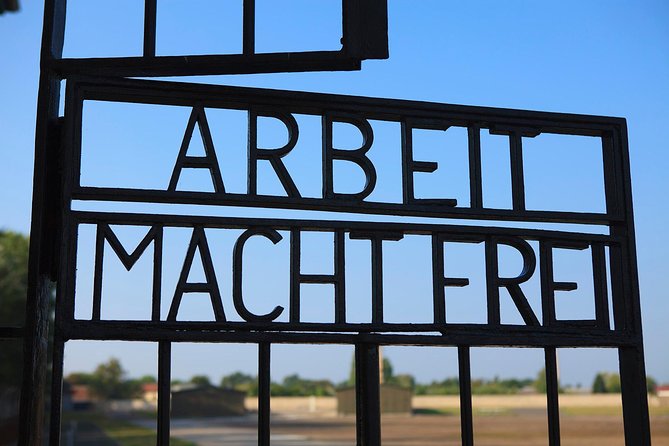
Sachsenhausen Concentration Camp stands as a somber reminder of the atrocities committed during the Nazi regime.
Today, the site serves as a memorial, educating visitors about the camp’s history and honoring the victims.
The memorial offers several meaningful ways for visitors to pay their respects:
The Sachsenhausen memorial ensures the camp’s tragic history is never forgotten.
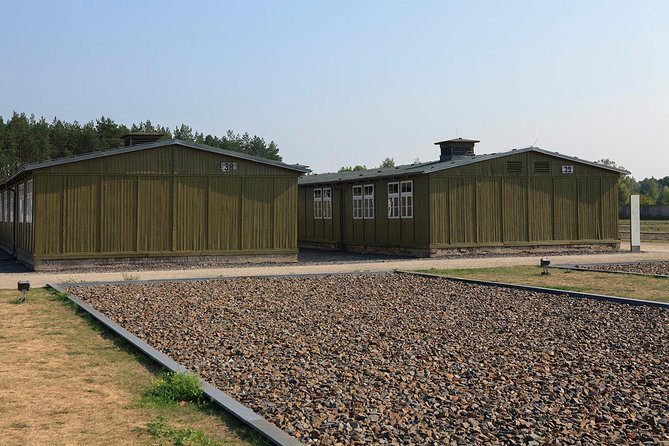
Getting to the Sachsenhausen Concentration Camp memorial is straightforward. The site’s central location in Berlin means it’s easily accessible via public transportation.
Visitors can take an ABC transit ticket to the Oranienburg station, which is a short walk from the camp’s entrance. The tour includes round-trip transportation, so travelers won’t need to worry about navigating their way there.
The memorial is wheelchair accessible, and visitors with moderate fitness levels should have no trouble navigating the grounds.
Comfortable shoes are recommended due to the extensive walking involved. With thoughtful planning, visitors can make the most of this poignant historical site.
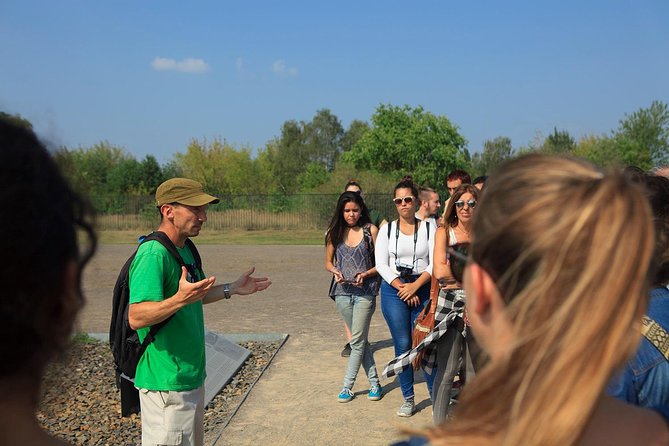
The memorial site at Sachsenhausen Concentration Camp is designed to be accessible for all visitors. The transportation to the site is wheelchair accessible, and the location is near public transportation options.
While a moderate level of physical fitness is recommended due to the long walking distances, the site provides several accommodations to ensure a comfortable experience:
Visitors are advised to wear comfortable shoes and be prepared for a moving and thought-provoking experience at this historic site.
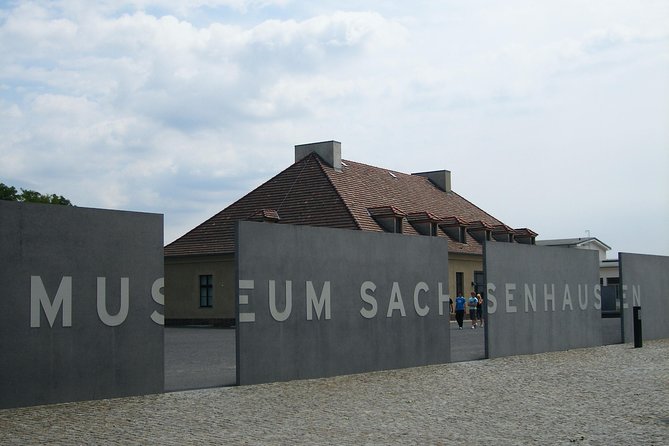
What do the tour reviews and ratings reveal about the Sachsenhausen Concentration Camp experience?
The overwhelming majority, 99% of travelers, recommend this tour. With over 1,000 reviews, the tour boasts an excellent 4.9 out of 5 rating.
Reviewers praise the knowledgeable local guides, the comprehensive tour, and the ability to gain a deeper understanding of this tragic history.
Despite the solemn subject matter, travelers find the experience powerful and impactful.
The tour’s accessibility and transportation options make it widely available.
We've Also reviewed these nearby tours and experiences
Yes, visitors are generally allowed to take photos during the tour, though they should be respectful and avoid disrupting the experience for others. Photography policies may vary, so it’s best to check with the tour provider beforehand.
The tour doesn’t have any age restrictions, and children are welcome to attend. However, it’s recommended that the tour is suitable for travelers aged 12 and above due to the sensitive nature of the content.
The tour is offered in multiple languages, including Spanish. According to the details, a local Spanish-speaking guide is included, but the tour may be available in other languages as well. Travelers should check with the tour provider for language options.
The tour doesn’t provide food or water during the experience. Travelers are responsible for bringing their own refreshments. It’s recommended to pack snacks and water, especially for longer tours, to stay hydrated and energized throughout the visit.
Visitors can’t extend the tour duration, but they can explore the site independently after the guided tour ends. The tour includes transportation and a local guide, but doesn’t provide food or water during the experience.
Sachsenhausen Concentration Camp stands as a chilling reminder of the Nazi regime’s atrocities. The camp’s powerful history and preserved structures provide visitors with a somber yet educational experience, honoring the memory of the countless prisoners who suffered and perished there. As a memorial and museum, Sachsenhausen continues to educate and inform, ensuring the horrors of the past are never forgotten.